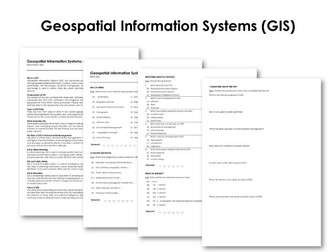
Geospatial Information Systems (GIS)
Geospatial Information Systems (GIS)
The worksheet consists of an information text. Based on this text, there are various exercises such as matching tasks, multiple-choice questions, open questions and true-false questions.
You receive the material and solutions in PDF format for easy printing and in docx format for The worksheet consists of an information text. Based on this text, there are various exercises such as matching tasks, multiple-choice questions, open questions and true-false questions.
You receive the material and solutions in PDF format for easy printing and in docx format for individual customization.







